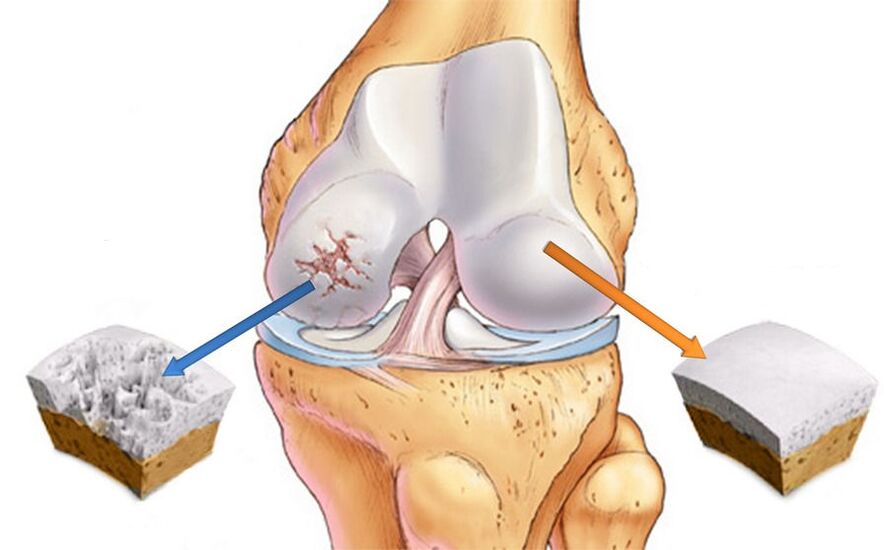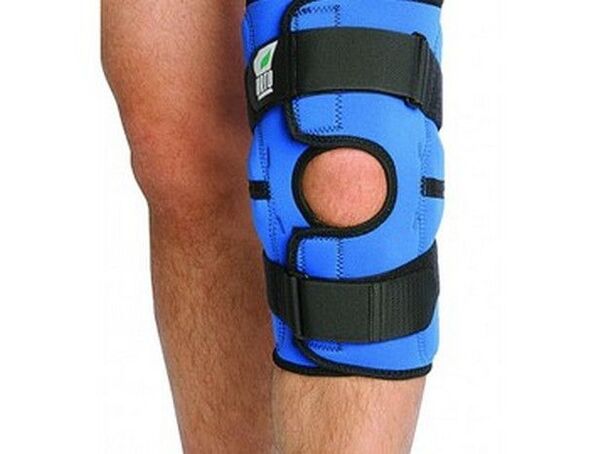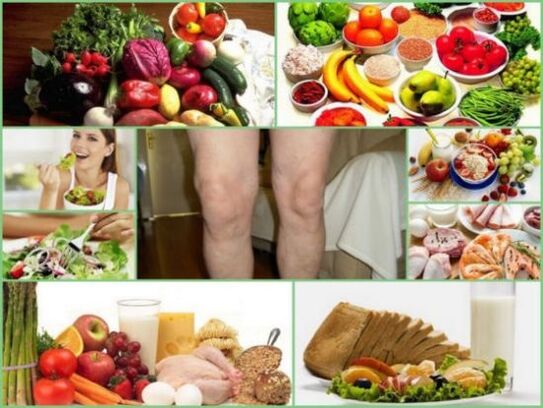
Arthrosis is a joint pathology accompanied by cartilage tissue damage. Synonyms of arthrosis are gonarthrosis, deforming osteoarthrosis, osteoarthritis - all these terms mean the development of degenerative processes in the cartilage covering the epiphyses of the articular bones.
Although the lesion affects only cartilaginous structures, all joint elements are affected - capsule, synovial membrane, subchondral bones, as well as ligaments and muscles surrounding the joint. Arthritis can affect one or more joints.
The most common localized forms of the disease have their own names: arthrosis of the hip joint is called coxarthrosis, arthrosis of the knee joint is called gonarthrosis.
Classification and causes
Knee arthrosis can be primary or secondary. The first group includes pathologies of unknown cause, that is, idiopathic. Secondary arthrosis occurs after an injury, due to congenital anomalies and against the background of systemic diseases.
The following are the causes of arthrosis of the knee joint:
- autoimmune pathologies - rheumatoid arthritis, lupus erythematosus, scleroderma, etc. ;
- inflammation of the joints caused by a specific infection (syphilis, gonorrhea, encephalitis);
- hereditary diseases of the musculoskeletal system and joints, type 2 collagen mutations.

There are also a number of factors that have a negative effect on the joints and can cause pathological changes in them:
- old age, overweight, osteoporosis;
- hormonal changes, including a decrease in estrogen synthesis in postmenopausal women;
- metabolic disease;
- lack of trace elements and vitamins in the diet;
- congenital and acquired deformations of skeletal bones;
- hypothermia and intoxication with toxic compounds;
- permanent damage to the joint during sports training or heavy work;
- operations on the knee joint - for example, removal of the meniscus.
Symptoms and stages
Deforming arthrosis of the knee joint is characterized by intracellular changes at the morphological, molecular, biochemical and biomechanical levels. The result of the pathological process is the softening, fibrization and reduction of the thickness of the articular cartilage. In addition, the surfaces of the bones forming the joint become denser, and bone spines - osteophytes - appear on them.
DOA of the knee joints develops in 3 stages, and in the initial stages, only minor pain and discomfort may appear after prolonged physical activity. Sometimes one of the characteristic signs of arthrosis appears - morning stiffness. At this time, changes occur in the synovial membrane and the content of intra-articular fluid.
As a result, the cartilage tissue does not receive enough nutrients and its ability to withstand pressure begins to decrease. Therefore, pain occurs with intense exercise and long walks.
In the second stage of arthrosis, the destruction of cartilage tissue progresses and part of the increased load is taken by the articular surfaces of the bones. Because there is not enough area for support, the edges of the bones grow due to osteophytes. The pain doesn't go away at rest like it used to, it even bothers me at night.
The time of morning stiffness also increases, and it takes a lot of time to "work" the leg to be able to walk normally. In addition, when the limb is bent, cracking and clicking sounds are heard, accompanied by sharp pain. It is not always possible to bend the leg completely, it seems to be stuck, and subsequent attempts end in a rough crisis and pain.

Due to the occurrence of pain during any movement, a person tends to move less, which has a negative effect on the muscles surrounding the joint. A change in the size of the epiphyses of the bones leads to the displacement of the surrounding axis and the development of deformation. As the volume of fluid inside the joint capsule decreases, it hardens. When osteophytes compress the surrounding soft tissues, synovitis and chronic inflammation appear.
When moving to the 3rd stage, the symptoms of arthrosis of the knee joint are very severe - the pain does not go away even at night, the motor ability practically stops, the leg looks crooked and does not bend. The third degree of arthrosis is characterized by X or O-shaped deformation, which makes movement extremely difficult. An advanced form of deforming gonarthrosis can only be treated surgically.
Diagnostics
The diagnosis of osteoarthritis of the knee joint is not particularly difficult, the doctor can accept gonarthrosis based on the existing symptoms and characteristic visual signs. An X-ray is taken to confirm the diagnosis. The images will show narrowing of the inter-articular space, bone growths and subchondral osteosclerosis of the bones.
X-rays are used to determine the cause of the disease. Bone deformations are especially evident in post-traumatic arthrosis. If cartilage degeneration is caused by arthritis, defects along the edges of bones, as well as periarticular osteoporosis and atrophy of bone structures are detected. With various congenital anomalies, there is a violation of the axis of one of the bones, which leads to improper distribution of the load and the formation of secondary osteoporosis.
Treatment
Treatment of gonarthrosis of the knee joint has 3 main goals - restoration of cartilage tissue, improvement of mobility in the joint and slowing down the progression of the disease. Great importance is attached to the elimination or weakening of symptoms - to reduce the intensity of pain and inflammation. Medicines, physiotherapy and exercise therapy are used to solve these problems. To get the maximum effect of the therapy, dosed physical activity and compliance with the orthopedic regimen is necessary.
Medical treatment of knee arthrosis includes taking painkillers and anti-inflammatory drugs, as well as chondroprotectors, which promote the regeneration of cartilage tissue. Medicines can be prescribed in the form of injections, tablets, ointments and gels.
If first-degree knee arthrosis is diagnosed, physiotherapeutic methods, physical therapy and massage are used in the treatment. Early stages of the disease are very easy to treat and full recovery can be expected. An important condition is to lose weight to reduce the burden of the painful joint.
Treatment of knee arthrosis of the second stage necessarily includes exercise therapy, wearing orthopedic devices and following a diet. To relieve pain, non-steroidal anti-inflammatory drugs, chondroprotectors and intra-articular injection of hyaluronic acid are prescribed.
Acute arthrosis is characterized by severe pain, for which conventional NSAIDs are not enough. In this case, injection of strong analgesics and glucocorticosteroids into the joint cavity is used.
If conservative methods are ineffective, a corrective or radical operation is performed (replacing the joint with a prosthesis).
The deforming arthrosis of the knee joint of the third stage is characterized by the complete absence of the interarticular space, which is replaced by bone structure. This condition requires surgical intervention, as other methods are powerless in this case.
NSAIDs and corticosteroids
In order to save patients from physical and mental suffering, the treatment of acute arthrosis begins with pain relief. Medicines that are part of the NSAID group and can be used in tablets or topically have proven to be effective.
The analgesic effect does not always occur immediately, but after two or three days it reaches its peak and the pain disappears. The course of treatment with NSAIDs is limited to two weeks, because longer use increases the risk of side effects. People with gastrointestinal problems and high blood pressure should be especially careful.
If there is no result, hormonal drugs are prescribed to eliminate inflammation. In the case of left-sided gonarthrosis, drugs are injected into the left knee, and in the case of right-sided - into the right.
Hormonal injections can be done not often, but once every 10 days. An indication of such treatment is a large accumulation of fluid in the joint due to inflammation. As the symptoms subside, they switch to tablet forms of drugs.
Chondroprotectors and hyaluronic acid
Chondroprotective substances work in three directions - restore damaged cartilage tissue, reduce pain and eliminate inflammatory reactions. Taking chondroprotectors helps to normalize the composition and properties of synovial fluid, nourish cartilage and protect pain receptors from irritation.
As a result, the destruction of cartilage structures and, as a result, the development of the disease slows down. After the course of medication, the joint's shock absorption and lubrication function is restored.
In the early stages of the disease, chondroprotectors can be used in the form of ointment or gel. However, intra-articular injections are most effective. Modern methods of treatment of arthrosis include the use of combined agents containing not only chondroprotective substances, but also anti-inflammatory components and vitamins.
Hyaluronic acid is the main component of synovial fluid, responsible for its viscosity and consistency. It is, in fact, a biological lubricant that provides cartilage with flexibility, elasticity and strength.
With the development of joint pathologies, the volume of hyaluronic acid can decrease by 2-4 times, which necessarily causes excessive friction of the bones. With the intra-articular injection of hyaluronate, the function of the knee is normalized, and a person can move normally.

Surgery
Surgery is a radical method in which the functionality of the joint is partially or completely restored. The degree of intervention can be different and depends on the stage of arthrosis. The softest operation is arthroscopy - the rehabilitation period after it is performed is the least painful for the patient.
Important:arthroscopy can be performed not only for treatment, but also for the diagnosis of articular pathology. This procedure makes it possible to identify damages that are inaccessible to other studies.
The goal of arthroscopy is to extend the life of the joint by removing dead and damaged tissue from the joint cavity. As a result, pain disappears, resistance to stress increases and motor activity returns.
In case of significant deformations, osteotomy is indicated - creating artificial bone fractures in a certain area. Knee osteotomy literally means "cutting the bones" - during the operation, the surgeon removes a wedge-shaped segment of the femur or tibia, then fuses the bones in the most physiological position. If necessary, the resulting gap is filled with bone graft. During the healing period, the structure is fixed with special clamps.
Endoprosthesis replacement is an alternative method to the outdated arthrodesis procedure, the essence of which is to partially or completely replace the diseased joint with a prosthesis. As a result, knee function is completely restored in more than 90% of cases, significantly improving the quality of life of patients.

Physiotherapy
Physiotherapy procedures play an important role in the treatment of arthrosis due to their beneficial effect on damaged joints. The course of physical therapy accelerates regeneration processes, relieves pain and muscle spasms. In addition, certain procedures allow the administration of drugs through the skin, thereby reducing the dose of oral drugs.
The following methods are recommended for damaged joints:
- magnetic therapy;
- medium wave ultraviolet (WUV);
- infrared laser;
- UHF;
- ultrasound;
- diademic and sinusoidal modulated currents (amplipulse therapy);
- Darsonval.
Effective procedures for arthrosis are also therapeutic baths - radon, hydrogen sulfide, bischofite, mineral and sage. They have an anti-inflammatory, analgesic and restorative effect on the joints.
Finally
If you suspect knee arthrosis, you should consult an orthopedic doctor or a traumatologist who recognizes and treats these pathologies. In order not to aggravate the disease, it is necessary to avoid excessive physical activity in the legs and get rid of excess weight.
There is no specific diet for arthrosis, but it is recommended to avoid concentrated meat and fish broths, fatty meats and smoked meats, as well as to reduce the consumption of table salt. Foods rich in vitamins and minerals and vegetable oils should prevail in the diet. In addition, it is recommended to fast once a week - kefir, cottage cheese or fruits and vegetables.
To strengthen the muscle corset of the lower extremities and increase blood flow, it is necessary to regularly perform therapeutic exercises selected individually by a physical therapy instructor.
Thus, taking medicines, physical procedures, balanced diet and physical exercises will definitely help a patient with arthrosis. And to avoid traumatic surgery, you need to seek medical help as soon as possible. Bless you!

























